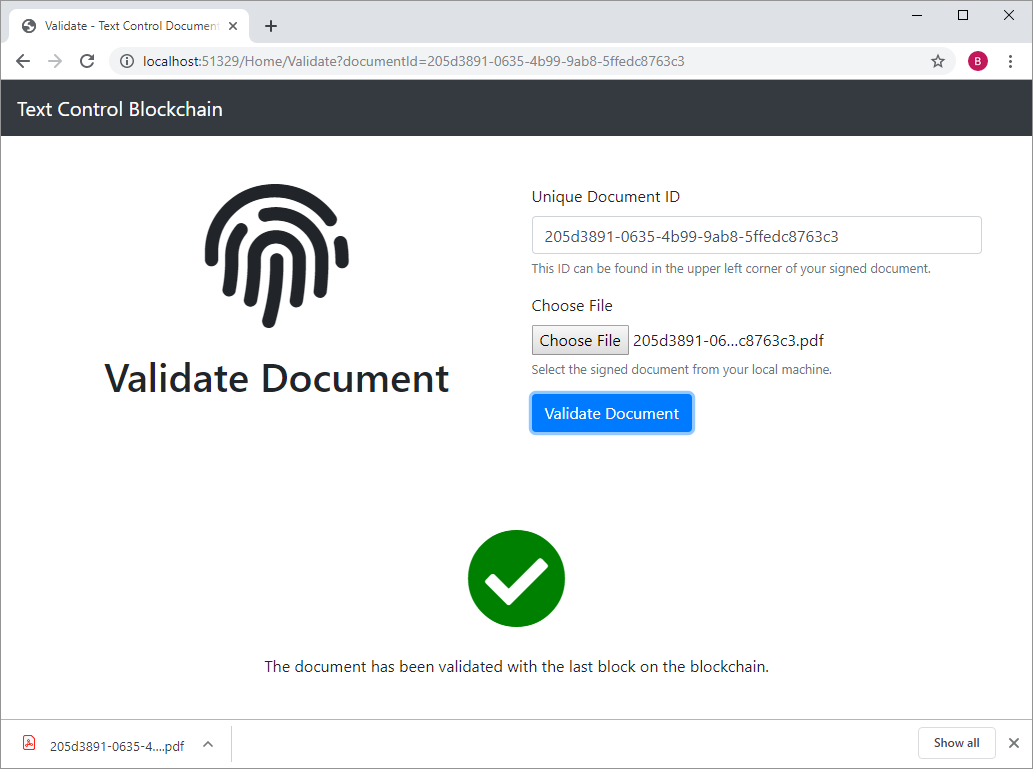Document Signing and Validation using Blockchain

Document Signing and Validation using Blockchain
Blockchain
Document Signing and Validation using Blockchain
Summary:
This article gives an overview of new possibilities to validate documents using blockchain technology.
Besides cryptocurrency, there are many business use cases for the blockchain concept. The blockchain algorithm can be used to store any data in a block. Basically, a blockchain is a data structure that invalidates previous blocks automatically and the integrity can be easily proofed.
The document signing process is an important process in many business use cases that guarantees the creation of binding obligations between two or more parties. Typically, digital signature online services such as DocuSign or Adobe Sign are used as trusted third-parties to prove the authenticity. Therefore, all documents are stored on their third-party servers to be validated.
Why Blockchain?
The blockchain is a distributed system to store information. The last block contains the latest version of the information that is stored on the blockchain. The integrity of the blockchain is secured by the algorithm itself. The block object stores the data, a time stamp, the previous hash and the current hash. Based on this linked list, every block can be validated by comparing the hash of the previous block with the current hash.
The software vendor Text Control published an idea that demonstrates how to validate documents by storing a checksum on a blockchain. The blockchain provides a way to store information about a document and returns always the most current version of it. In the demo, a document can be electronically signed and the MD5 checksum of the document is then stored on a private blockchain.

Validating Documents
After a document is signed and a version is stored on the blockchain, the document can be validated. In the demo, the signed document can be downloaded and stored locally after the signing process. In order to validate the document (or any other version of it), it can be uploaded and validated against the blockchain.

The service creates a checksum of the uploaded document and compares the checksum to the value in the latest block of the blockchain. If the value is the same, the uploaded document is valid.
Document Workflow
The following diagram shows the complete document signing and validation process:

In case of a distributed blockchain, no trusted third-party is required to store the documents for the validation process. Each party is able to validate the documents based on the distributed ledger. In the demo concept, only a created checksum is stored. But obviously, this concept is very flexible and provides enough space for additional options. Consider a scenario where multiple authors or signers are required to sign a document. Keeping track of the most current (trusted) version can be a challenge without a reliable and transparent implementation.
Conclusion
Blockchain technology can be used to store document checksums to validate a document. The blockchain always contains information about the most current version of an uploaded or signed document. The game changing advantage is that documents must not be stored on third-party servers to be validated, if the ledger is distributed.